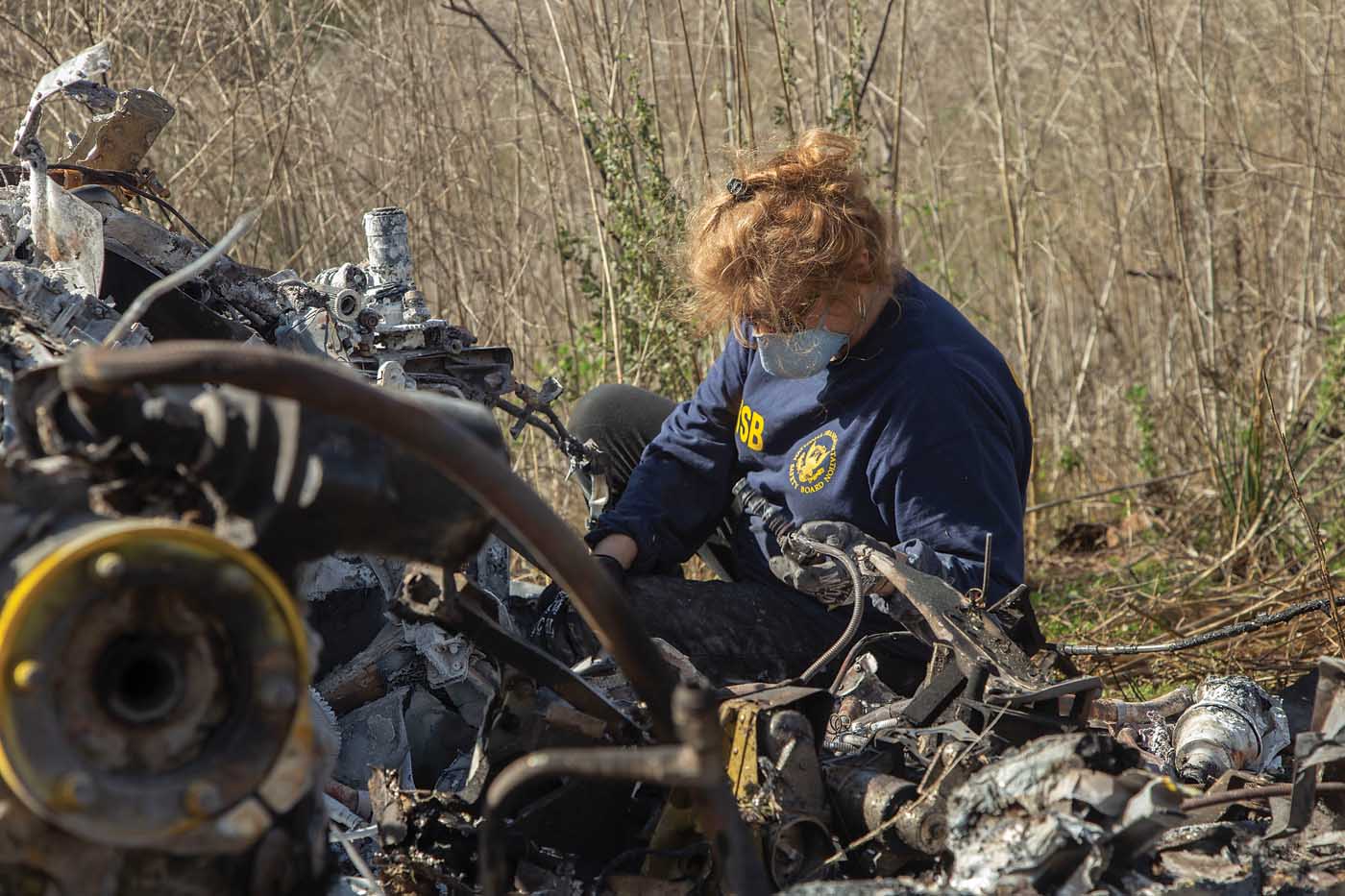On the morning of Sunday, Jan. 26, I woke up in a hotel room in Camarillo, California. I had been scheduled to do some flight training out of the Camarillo Airport that day, but canceled the night before after coming down with a head cold. When I looked out the window, I saw that I wouldn’t have been doing much flying that morning anyway: the fog was so thick I could barely see across the street.
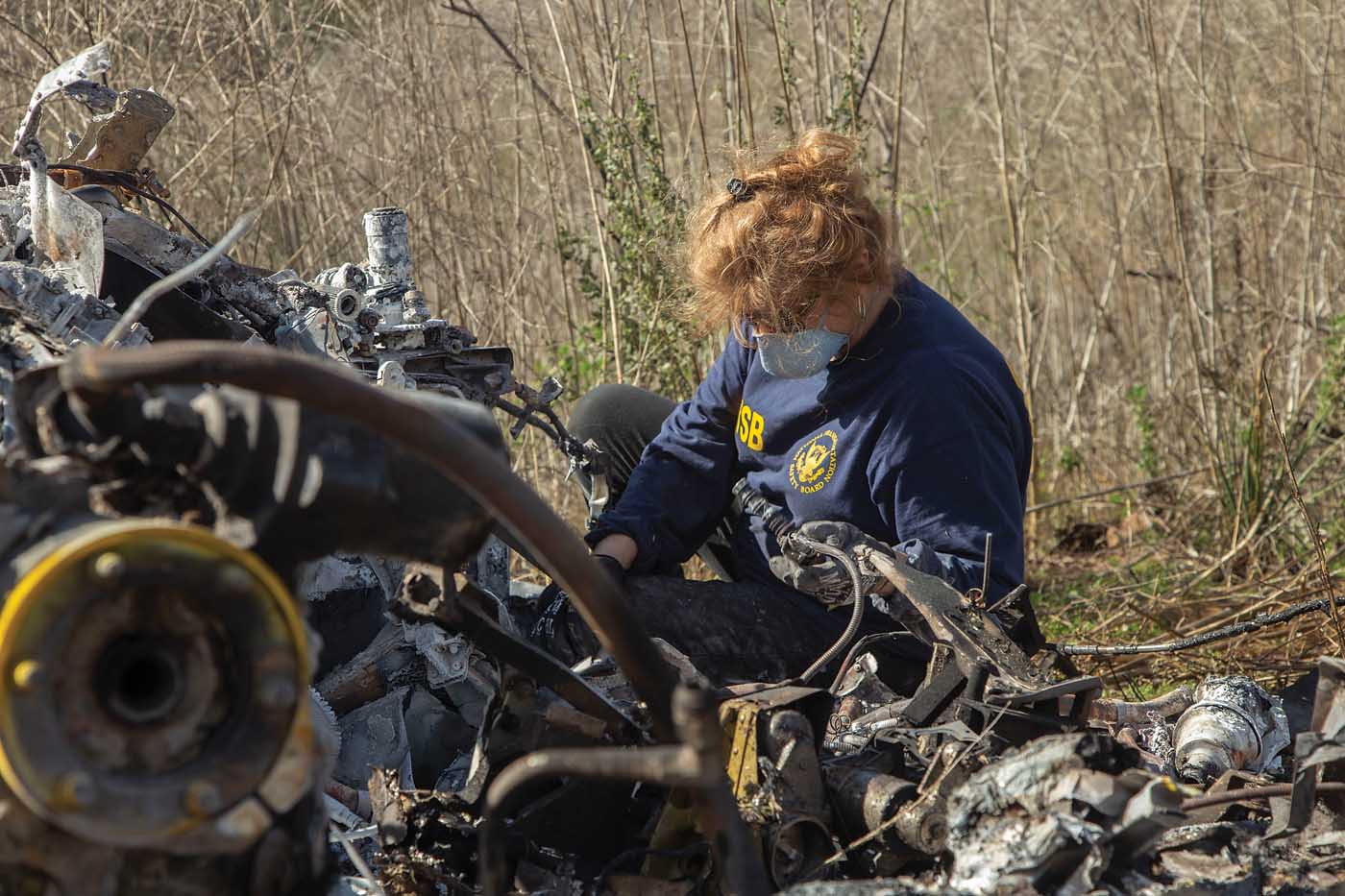
Some time later, at 9:45 a.m., a Sikorsky S-76B helicopter en route to Camarillo from Orange County slammed into a hillside in Calabasas. All nine people on board were killed, including basketball legend Kobe Bryant and his 13-year-old daughter, Gianna.
The circumstances of the accident flight have been exhaustively documented by mainstream media outlets and legions of bloggers, thanks to a wealth of publicly available radar data and air traffic control recordings. The National Transportation Safety Board (NTSB) confirmed that the helicopter departed John Wayne Airport at 9:06 a.m., proceeding northwest toward Burbank Class C airspace, which was under instrument flight rules (IFR) at the time. An air traffic controller there asked pilot Ara Zobayan to hold for IFR traffic for 12 minutes, then granted him a special visual flight rules (VFR) clearance to transit the airspace — which is not an unusual clearance for helicopter pilots to receive.

Zobayan indicated that he planned to follow Highway 101 westbound and was handed off to a controller at neighboring Van Nuys Airport. As he was passing out of Van Nuys airspace, he reported VFR conditions, and the controller told him to contact Southern California Terminal Radar Approach Control for radar advisory services. But when he checked in with SoCal Approach at 9:39 a.m., he was told that his altitude of 1,500 feet mean sea level (MSL) was too low to maintain radar contact — which is not an unusual thing for helicopter pilots to hear.
Six minutes later, Zobayan again contacted SoCal Approach to advise he was climbing above cloud layers, and requested advisory services. The controller — a different one this time — asked him to identify the flight and state his intentions. In his last radio transmission, Zobayan said he was climbing to 4,000 feet. Indeed, radar data showed the S-76 climbing steadily up to 2,300 feet MSL, which was later revealed to be just 100 feet below the top of a widespread cloud layer.
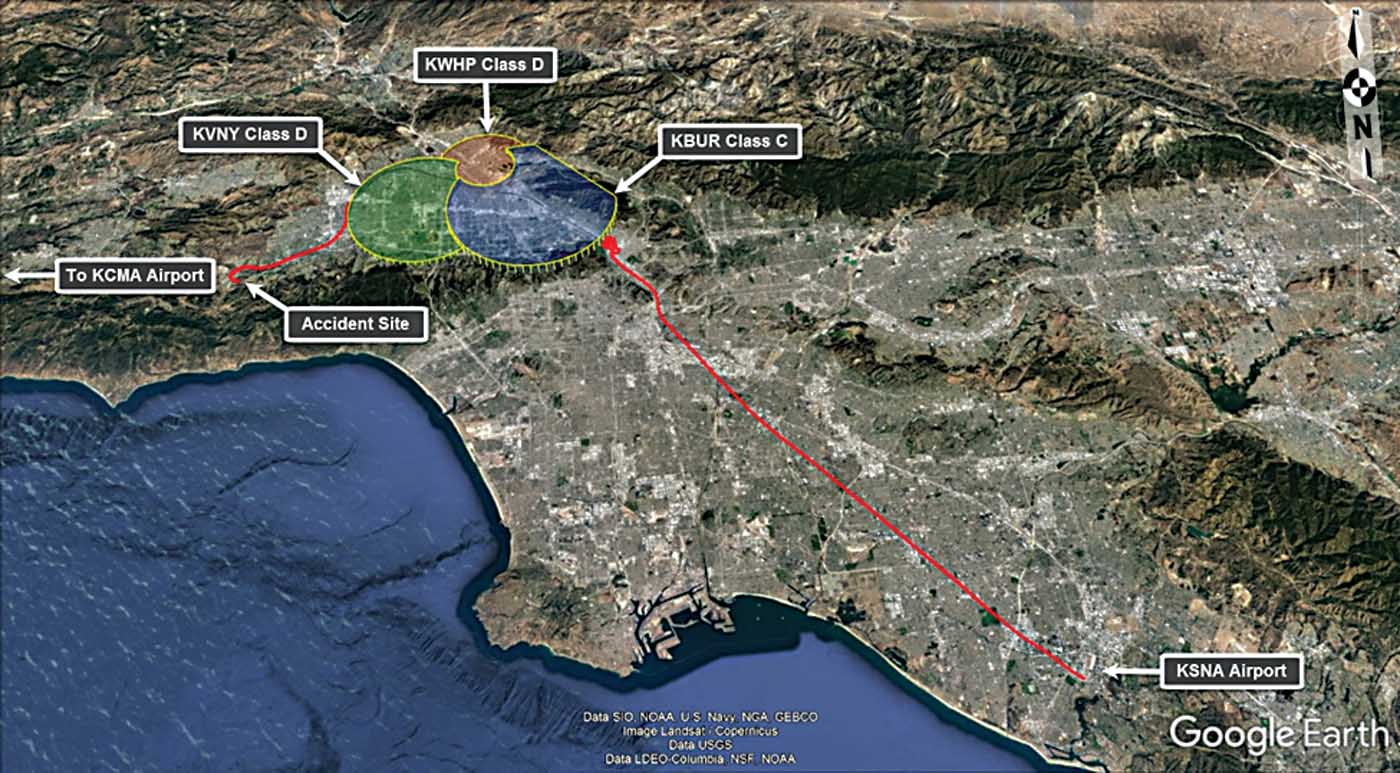
But then the helicopter started a left turn. Eight seconds later, while continuing to turn, it also began descending, eventually reaching an alarming descent rate of over 4,000 feet per minute. A witness on a misty mountain bike trail below saw the blue-and-white helicopter emerge from the clouds on a forward and descending trajectory, roll to the left, then impact terrain about 50 feet (15 meters) below him, carving out an impact crater two feet (nearly a meter) deep.
That’s not an unusual thing for helicopters to do, either.
The fact is, whatever the NTSB’s investigation may ultimately reveal about the cause of this crash, no one I know in the helicopter industry is particularly perplexed by it. That’s because the broad circumstances of the accident — a VFR helicopter flies into clouds, and crashes into terrain a short time later — are all too familiar.

In 2015, I compiled a spreadsheet of such accidents in the United States for the period from 2001 to 2013. (There are also many of these accidents outside the U.S., but the NTSB provides a uniquely comprehensive and searchable database.) I found that helicopter accidents that fit the classic profile of continued VFR flight into instrument meteorological conditions (IMC) — typically associated with loss of control due to spatial disorientation — occur in the U.S. on average around three or four times a year, and are usually fatal.
After the Kobe Bryant crash, I went back and updated my spreadsheet, finding that not much has changed. If anything, 2019 may ultimately prove to have been a particularly deadly year for such “inadvertent IMC” events, depending on the outcome of the NTSB’s investigations (which are complete for this set of accidents only through early 2018).
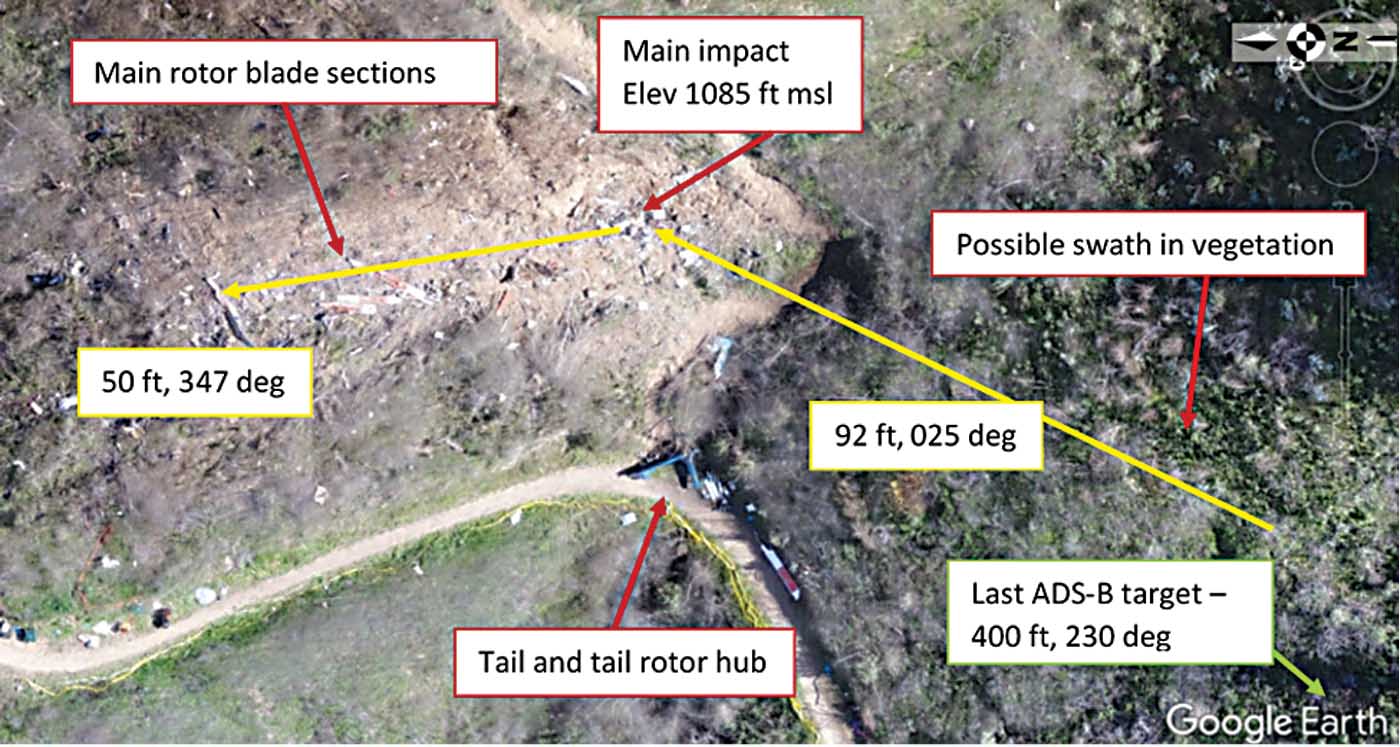
That suggests that nothing the Federal Aviation Administration (FAA) and the helicopter industry have done since 2013 has been particularly effective in preventing these accidents from happening. Here’s a short list of some of the things we’ve tried: raising the minimum flight visibility for helicopters to a half mile, requiring air ambulance pilots to hold instrument ratings, requiring air ambulances to have helicopter terrain awareness and warning systems (HTAWS), requiring part 135 helicopters to have radar altimeters and part 135 pilots to be trained for inadvertent IMC recovery, telling pilots to “land the damn helicopter” in deteriorating weather, and, for my own part, writing countless safety-oriented articles like this one.
None of these have worked. Is there something that would? Or is the helicopter industry not actually capable of meaningful change?
Instrument ratings don’t help
The motivation for my original spreadsheet was to determine how often VFR-into-IMC accidents involved pilots who, like Zobayan, held helicopter instrument ratings. Requiring instrument ratings is often held up as one solution to the problem — as is currently the case in Hawaii, where state lawmakers are advocating for all helicopter tour pilots to hold instrument ratings.

As regularly as these accidents occur, they’re mercifully still too rare to invite rigorous statistical analysis, so my conclusions were limited. But I observed that fully half of the pilots involved in VFR-into-IMC helicopter crashes in the United States between 2001 and 2013 held helicopter instrument ratings, and the pilots in another six accidents held airplane instrument ratings. Moreover, because these pilots tended to be commercially employed and carrying passengers or crewmembers, they were responsible for 22 more fatalities that non-instrument-rated pilots, who were often private pilots flying personal aircraft.
When I looked at VFR-into-IMC accidents from 2014 through January 2018, I found that the percentage of these pilots with a helicopter instrument rating was even higher — over 70 percent — and that they were responsible for 23 fatalities, compared to five fatalities for the non-helicopter-instrument-rated pilots. This likely reflects the fact that an instrument rating has become an increasingly common employment requirement for helicopter pilots, as through the FAA’s 2014 rule requiring them for helicopter air ambulance pilots.

In the immediate aftermath of the Kobe Bryant crash, many fixed-wing pilots expressed regret that Zobayan, who was flying an IFR-certified helicopter, had not chosen to file IFR (only later did the FAA confirm that his employer, Island Express Helicopters, was certified for VFR operations only). But as I pointed out in the 2015 article for which I compiled my original spreadsheet, a helicopter instrument rating means something very different in the U.S. than an airplane instrument rating does. An instrument-rated airplane pilot has almost certainly flown in actual IMC, and almost certainly has an IFR-certified airplane at their disposal. An instrument-rated helicopter pilot, not so much.
Take my own example. Like Zobayan, I hold not only a helicopter instrument rating, but also an instrument instructor rating. That means I am qualified to train students for helicopter instrument ratings, and have actually done so. But I have exactly zero actual instrument time. Even at my sharpest, I had very little experience in the IFR system and very little familiarity with the autopilots that are typically required for actual IFR flight. At this point, it has been years since I’ve even done an instrument proficiency check.

The FAA has tolerated this double standard for instrument training because it is the only remotely cost-effective way to introduce pilots to helicopter IFR flight. And this is partly the FAA’s fault. Helicopters have always been more difficult than airplanes to manage in the clouds because of their inherent instability: take your hands off an airplane’s yoke for a few seconds and it will probably keep flying; take your hands off an unstabilized helicopter’s cyclic for the same amount of time and it will probably crash. So helicopter autopilot technology demands a certain baseline level of sophistication, and the weight penalty associated with older automatic flight control systems and gyroscopic instruments made them generally impractical in light, single-engine helicopters.
In 1999 and 2001, however, revisions to FAA policy guidance made IFR certification of single-engine helicopters even more impractical. First, the FAA incorporated numerical safety analysis methods into its certification policy for normal category rotorcraft, defining the term “extremely improbable” as less than one event in a billion flight hours (1E-9). Then, it required that helicopter manufacturers substantiate loss-of-function or hazardously misleading indication of attitude, airspeed, and barometric altitude in IFR to the “extremely improbable” standard, something that could cost-effectively be done only in multi-engine, transport-category rotorcraft.

Given that instrument flight instruction in an entry-level twin-engine helicopter runs well over $2,000 per hour — compared to something like $200 in a Cessna 172 — the FAA got used to letting flight schools do instrument training in VFR-only helicopters. I did my own instrument training and flight instruction in a Robinson R22 equipped with old-fashioned “steam gauges” — an aircraft that has no actual business flying in clouds.
In June 2015, a group of industry associations — including Helicopter Association International (HAI), American Helicopter Society International (now the Vertical Flight Society), General Aviation Manufacturers Association, and Aircraft Electronics Association — published a white paper calling on the FAA to revise its policy guidance to open the door to IFR certification of single-engine helicopters. The white paper cited a staggering number of helicopter accidents related to inadvertent IMC or controlled flight into terrain due to low-level flight to avoid weather: nearly 250 worldwide between 2001 and 2013, responsible for the deaths of hundreds of people. While most of these involved single-engine helicopters, 40 of them involved multi-engine rotorcraft whose pilots, like Zobayan, were attempting to fly under VFR.

“What is not captured in the accident data are the near misses of obstacles and terrain that occurred trying to avoid weather, or the near losses of control that occurred attempting to exit [inadvertent IMC],” the associations wrote. “The erratic year-to-year data is indicative of a broader issue where a high-risk practice of ‘scud running’ is prevalent and what is captured in the data are the aircraft that failed in the gamble.”
The associations argued that permitting IFR certification of single-engine helicopters would make IFR operations more affordable and therefore widespread, increasing safety in the process. After all, the entire IFR system was invented precisely to avoid accidents like these, with aircraft flying known routes at known safe altitudes, and controllers there to keep them from running into each other.
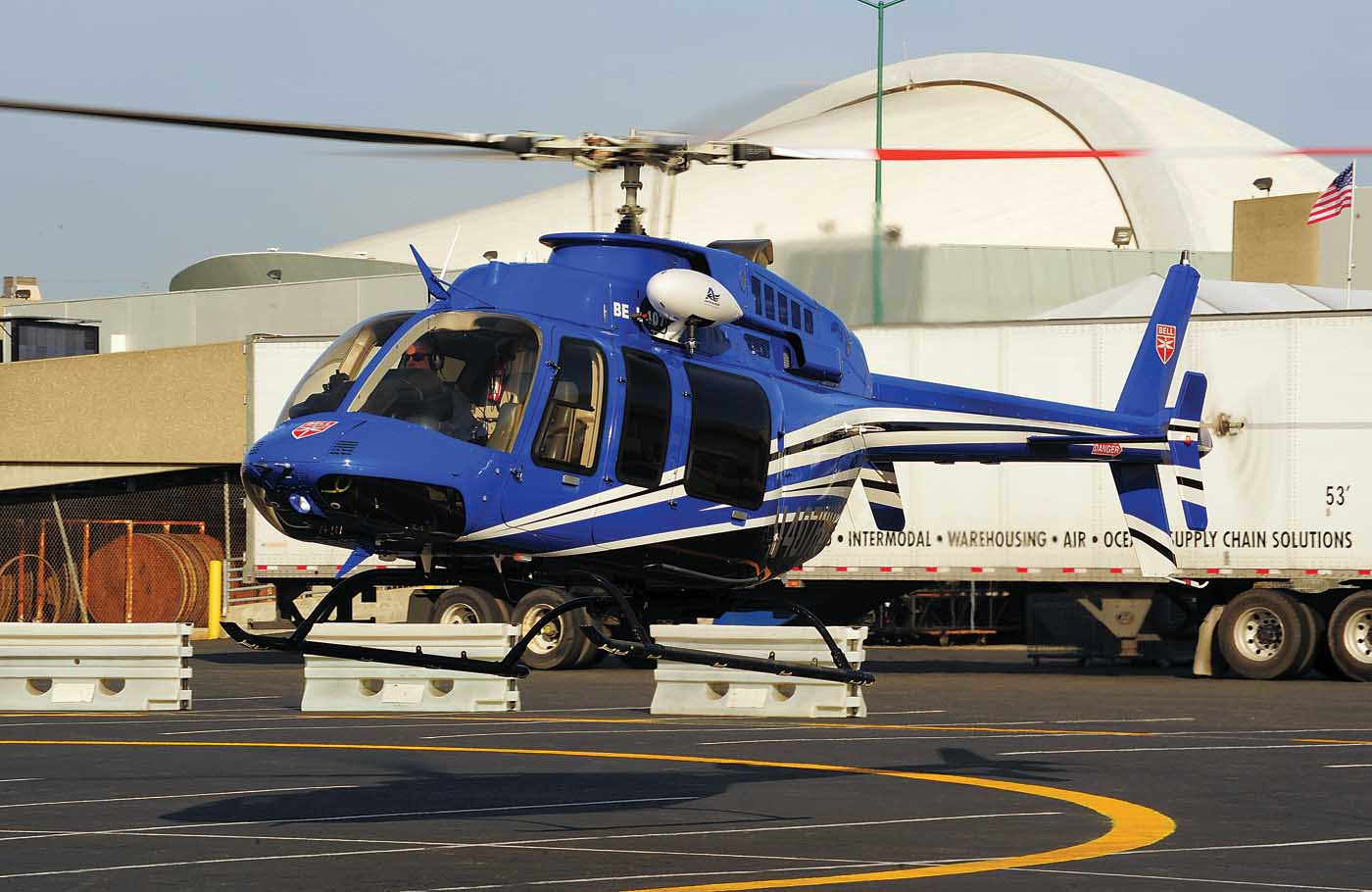
The associations optimistically predicted that “successful and safe completion of missions under IFR will have a snowball effect throughout the industry,” as “single-engine operators will begin to mandate operations under IFR when conditions do not support safe VFR operations once a practical means-of-compliance for IFR certification is established.”
Two years later, in June 2017, the FAA published a policy statement that eased numerical safety analysis requirements for various classes of part 27 rotorcraft, although it did not address single-engine IFR requirements directly. But helicopter manufacturers weren’t strongly motivated to certify any single-engine helicopters for IFR until last year, when Leonardo Helicopters and Bell certified the TH-119 (a variant of the AW119) and the Bell 407GXi, respectively, in order to compete for the U.S. Navy’s lucrative training helicopter contract. Bell didn’t announce the first commercial customers for its IFR-certified 407GXi until this year’s HAI Heli-Expo — a couple of days after the Kobe Bryant crash — and Leonardo has yet to confirm any.

Although it took fully four years from the date of the white paper to certify a single-engine helicopter for IFR, the “snowball effect” the associations predicted will likely take even longer, if it happens at all. That is because, as the white paper acknowledges, affordable and practical IFR-certified helicopters are a necessary but not sufficient element for establishing the type of IFR culture that is prevalent in the fixed-wing world. We also need IFR infrastructure that is useful to helicopters — which often fly to destinations other than airports, and typically have less range and endurance than airplanes do — as well as instrument-rated pilots who are current and proficient in actual IFR flight.
While IFR helicopter operations and proficient instrument helicopter pilots certainly exist, the helicopter industry has largely evolved to take advantage of not flying like airplanes. In the U.S., we’re permitted to fly much lower than airplanes, with much less separation from people and structures. Airplanes are never allowed to fly VFR with less than one mile visibility, but until 2014, helicopters could legally operate in uncontrolled airspace with no minimum visibility requirement at all, provided they remained clear of clouds and operated at a speed slow enough to see other aircraft and obstructions in time to avoid a collision. (How do you know if you’re not slow enough? You hit something.)

Helicopter operators have exploited this leeway for the full spectrum of operations: from life-saving search-and-rescue missions to decidedly less critical operations like frost control, which entails hovering over crops on cold nights to prevent them from freezing. When the FAA proposed to raise the minimum visibility requirement for helicopters in uncontrolled airspace to one-half mile — still only half of what is required for airplanes — some helicopter operators were supportive, but others perceived it as an existential threat.
In comments submitted to the FAA during the rulemaking process, numerous operators opposed the minimum visibility change, arguing that helicopter pilots should be the ones to decide whether visibility is adequate. The Experimental Aircraft Association was particularly outspoken in its opposition, arguing that “to impose a visibility limit shows the FAA does not truly understand the entire scope of what commercial and private helicopter missions are and their combined effect on the national economy.”
Only one commenter, Safety and Flight Evaluations International, suggested that a minimum visibility requirement of a half mile was still too low to have much impact on safety, and should actually be raised to something higher. The FAA chose to proceed as planned, stating that “implementing more restrictive visibility minimums than those proposed would be outside of the scope of the proposed rule.”
Better lucky than good?
In my 15 years of flying helicopters, I’ve only experienced true spatial disorientation once, while undergoing an instrument proficiency check at night over unlighted Arizona desert. The condition crept up on me: one minute I was fine, and the next minute I felt like I was toppling over the edge of a cliff. The experience bore no resemblance to anything I had previously encountered under a view-limiting hood. This was not losing track of my instrument scan and drifting through a few hundred feet of altitude; it was entering a terrifying new world in which gravity was acting on me from a direction that I didn’t recognize as down.

In that case, I was able to claw myself back from the brink, possibly by tilting my head up far enough to see the lights of Phoenix on the horizon. Although I had dutifully memorized and recited all of the aeromedical factors related to spatial disorientation, and indoctrinated my students in the same, not until that evening did I fully appreciate how quickly things could go sideways in an unstabilized helicopter on a dark night or in the clouds.
Since then, I’ve gone through and written about a number of courses intended to prepare helicopter pilots for recovery from inadvertent IMC. Some of these have been in simulators, some in real helicopters, and all have been excellent training experiences (far superior, I suspect, to what passes for inadvertent IMC training at most part 135 helicopter operations). But my own brush with spatial disorientation reinforced how infinitely harder it is to trust your instruments when your senses lose their grip on reality. Indeed, I’ve written about several VFR-into-IMC helicopter accidents in which the pilot’s first impulse was to reach up and cage their attitude indicator — convinced it was their instrument, and not their understanding of the world, that was wrong.
In the absence of rigorous, routine practice in instrument flight, recovery from inadvertent IMC is largely a matter of luck. You’re lucky if your helicopter is in stable straight-and-level flight when you enter the clouds and you have an extra moment to transition to instruments. You’re lucky if you break through a cloud layer before you lose your nerve to keep climbing straight ahead, and attempt to turn around.
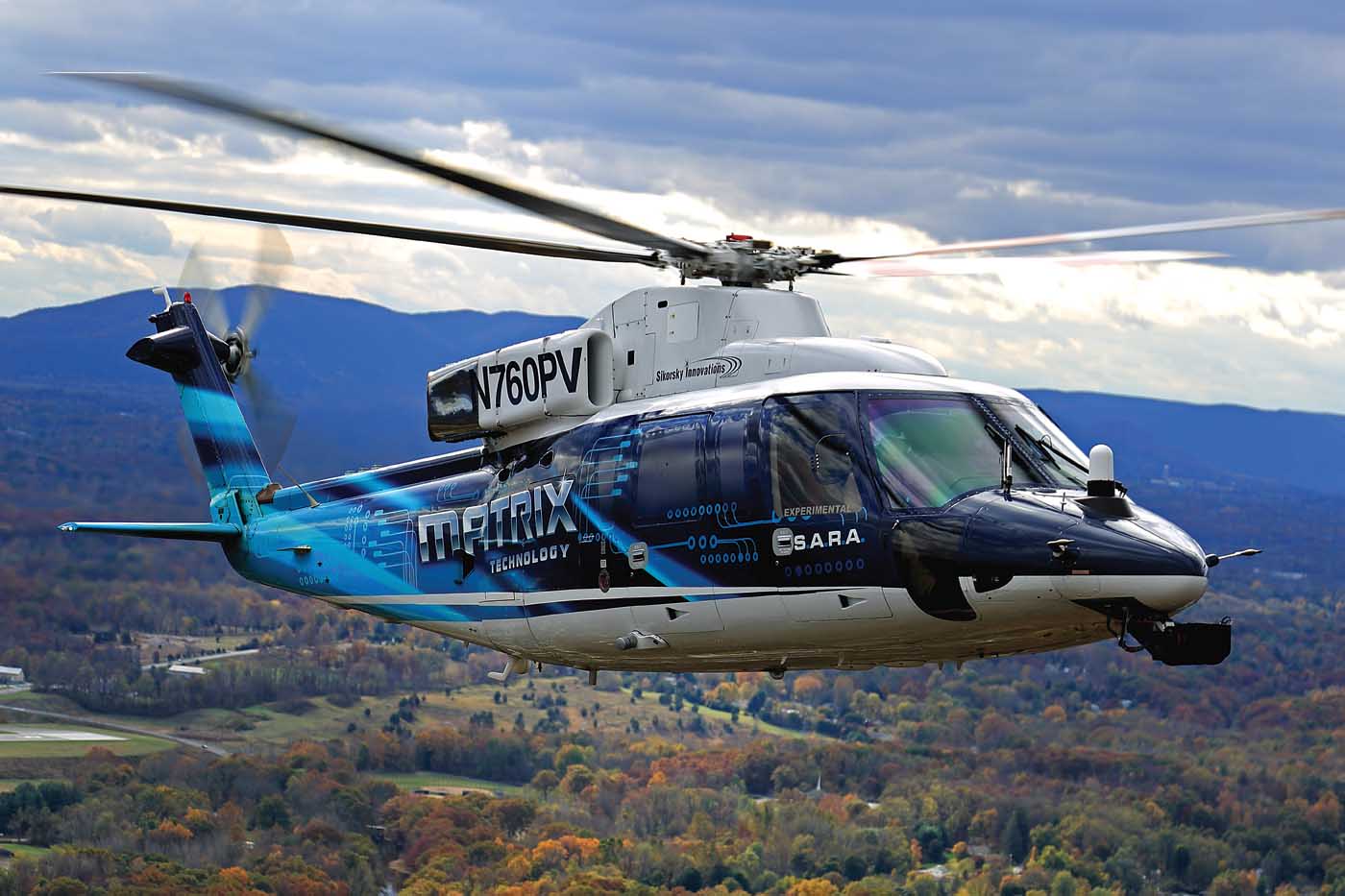
Once you surrender to spatial disorientation, I believe, all bets are off, because at that point you are not processing information correctly. An HTAWS screaming “Terrain! Terrain!” will likely further confuse you. Your only hope is to recover some sense of a horizon while you still have enough altitude to regain control of the aircraft. An autopilot will help, of course, but only if you retain enough mental processing power to remember how to use it.
Obviously, the best cure for spatial disorientation is to never get into it in the first place. But as long as VFR helicopters are permitted and even expected to poke around at low altitudes in marginal visibility, some non-zero percentage of them will stray into IMC, and some non-zero percentage of their pilots will be unlucky.
Unwise, too, perhaps — but as someone who has actually had to “land the damn helicopter” on multiple occasions to wait out weather, I can attest that the decision point for a precautionary landing is rarely obvious. Are the clouds a little thinner in that direction, or is that just an illusion? Is the front passing, or stalling out? Such judgments are always fraught with uncertainty, and commercial or mission-related pressure to fly can influence those judgments in ways we don’t always recognize.
Over the past year, I’ve spent much of my time writing about the emerging electric vertical takeoff and landing (eVTOL) industry, which is developing novel air taxis that can take off and land like helicopters, but will ostensibly be clean and quiet enough to deploy in cities by the thousands. Helicopter manufacturers including Bell and Airbus are enthusiastically embracing this “urban air mobility” vision, and some helicopter operators are, too, but others regard the entire enterprise with blistering contempt. Much of this disdain relates to the perceived hubris of companies like Uber, which claims it will launch its first eVTOL air taxi services in 2023. Given that it took several years just to convince the FAA to let an already certified helicopter like the Bell 407 fly in the clouds, some skepticism regarding Uber’s ambitious timeline is understandable.
I suspect, however, that the conventional helicopter industry also resents the high levels of autonomy that are being designed into these aircraft. Uber and other companies plan to employ large numbers of pilots at the outset, but eventually do without pilots altogether as autonomous technologies mature. Even early eVTOL models should be much simpler to fly than conventional helicopters, with much greater envelope protections, making the specialized skillsets of today’s helicopter pilots less relevant. Autonomy is also finding its way into conventional helicopters, as with the Sikorsky Autonomy Research Aircraft — a modified S-76B that can be flown by non-pilots using a tablet — and Sikorsky’s optionally piloted Black Hawk. These are not simply aircraft that fly a pre-determined route from point A to point B; they are vehicles that can sense their environments and “decide” how to avoid traffic and obstacles.
Autonomous passenger-carrying aircraft still have a long way to go to prove themselves, let alone achieve certification, so some skepticism is warranted here, too. But one thing has been amply proven: that human pilots are terrible at controlling helicopters in the clouds, except for under the regimented conditions of actual IFR flight. Unless the helicopter industry chooses to adapt its business models to fully embrace IFR operations in conditions of marginal weather, a certain number of VFR-into-IMC accidents seems inevitable, at least until technology makes human pilots irrelevant.
Our choice then is, quite literally, to adapt or die. So far, we’ve chosen to die.





